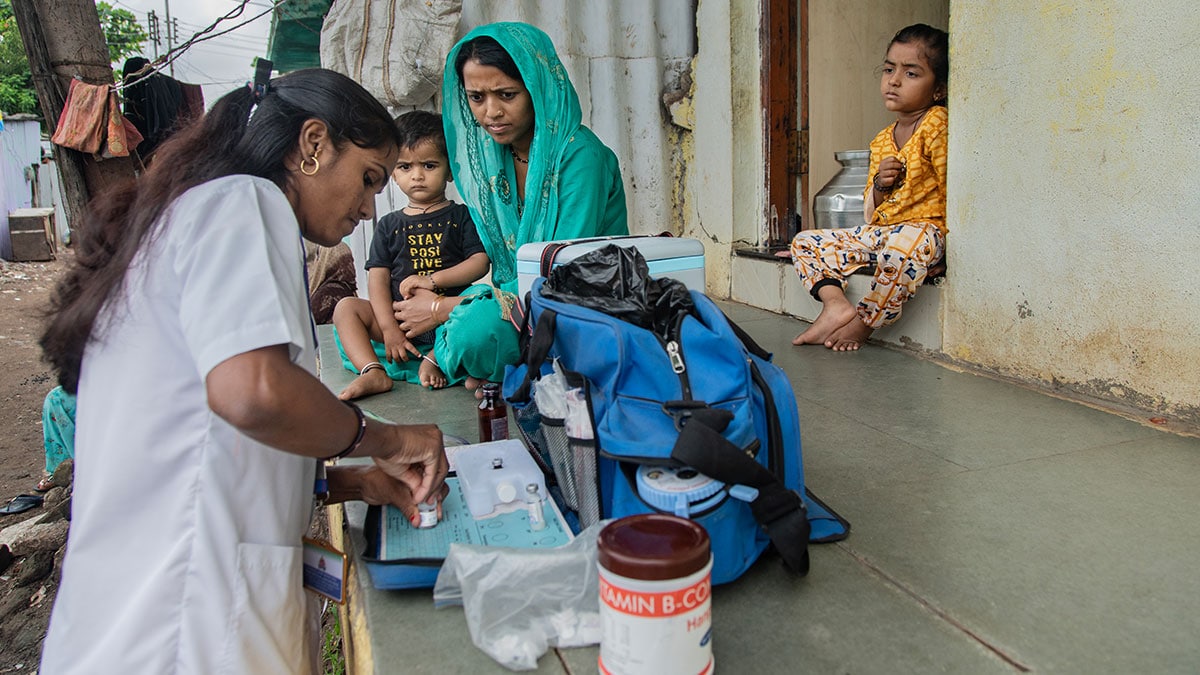What to know
CDC has a long history of fighting polio – beginning in the 1950s. Today, CDC is focused on ending polio globally. As a partner in the Global Polio Eradication Initiative (GPEI), CDC is working towards two goals: 1) permanently stop the spread of wild poliovirus, and 2) stop outbreaks of variant poliovirus.
Preventing disability and saving lives

Polio can lead to paralysis and death.
The world has come a long way in stopping polio since the launch of GPEI in 1988.
In 2023, there were a total of 12 confirmed cases2 of wild polio in two countries: Afghanistan and Pakistan. Efforts to eradicate polio over the last few decades have prevented more than 20 million cases of paralysis.
However, if wild poliovirus continues to spread in Pakistan and Afghanistan – and if variant poliovirus outbreaks continue – children worldwide remain at risk of paralysis.
Saving time, money, and resources

Ending polio is cost effective.
To end global polio, partners and national governments are working together to vaccinate more than 400 million children a year. As polio vaccines are inexpensive, this relatively small investment can save countless children from paralysis and death.
The global goal is to eradicate polio – stopping the virus entirely, as opposed to dealing with cases and outbreaks indefinitely. Analysis shows that eradication will save an estimated $33 billion in health-related costs by the year 2100.4
Furthermore, the same healthcare workers who administer polio vaccines have also delivered billions of doses of vitamin A since 1988. Vitamin A decreases the risk of disease and death among children without access to complete nutrition.
This combined campaign strategy provides multiple health benefits from a single campaign.
Protecting children everywhere
Polio anywhere puts children at risk everywhere.
Polio was once one of the most feared diseases in the United States.
Before polio vaccines became available in the 1950s, polio paralyzed more than 15,000 people each year in the United States. Thanks to widespread polio vaccination in the United States, wild polio has been eliminated – with no cases occurring in the country since 1979.
However, it takes only one traveler with polio to bring the disease into a country.
Communities with low polio vaccination rates are at risk of polio spreading from infected travelers, or having outbreaks from poliovirus variants that can emerge over time.
For instance, wild poliovirus had not been detected in southeastern Africa since the 1990s, and the continent of Africa was certified free of wild polio in 2020. However, in 2021 and 2022, wild poliovirus – imported from Pakistan –was reported circulating first in Malawi and later in Mozambique. The outbreak caused paralysis in nine children.
Ongoing challenge: poliovirus variants
Poliovirus variants, while rare, can also cause paralysis.
How poliovirus variants emerge:

Children receive oral poliovirus vaccines
These vaccines contain a weakened form of poliovirus.
The weakened virus spreads in the community
Contact with the weakened virus provides polio immunity to some children who did not receive the vaccine.
The weakened virus begins to mutate
The spread of the weakened virus is initially beneficial. However, if the spread happens for too long in communities with low polio vaccination rates, it can become harmful. Over time, the weakened virus begins to mutate as it spreads from person to person.
Eventually, paralysis-causing variants emerge
As spread continues over time, the virus may mutate into a variant that can cause paralysis in people who are not immune to polio.
Partnering to end polio
GPEI has helped bring us to the brink of a polio-free world.
GPEI's Polio Eradication Strategy 2022-2026 has two goals:
- Permanently interrupt all wild poliovirus transmission
- Stop the transmission of poliovirus variants and prevent outbreaks
Once these goals are reached, GPEI is committed to ensuring a smooth transition to country health programs so the world remains polio-free.
- Bigouette JP, Wilkinson AL, Tallis G, Burns CC, Wassilak SG, Vertefeuille JF. Progress Toward Polio Eradication — Worldwide, January 2019–June 2021. MMWR Morb Mortal Wkly Rep 2021;70:1129–1135. DOI: http://dx.doi.org/10.15585/mmwr.mm7034a1.
- Global Polio Eradication Initiative. List of wild poliovirus by year and country. Data from WHO as of February 6, 2024.
- UNICEF. Oral polio vaccine (OPV) price data. Data as of January 16, 2024.
- Global Polio Eradication Initiative. Investing in the Promise of a Polio-Free World. 2022.
